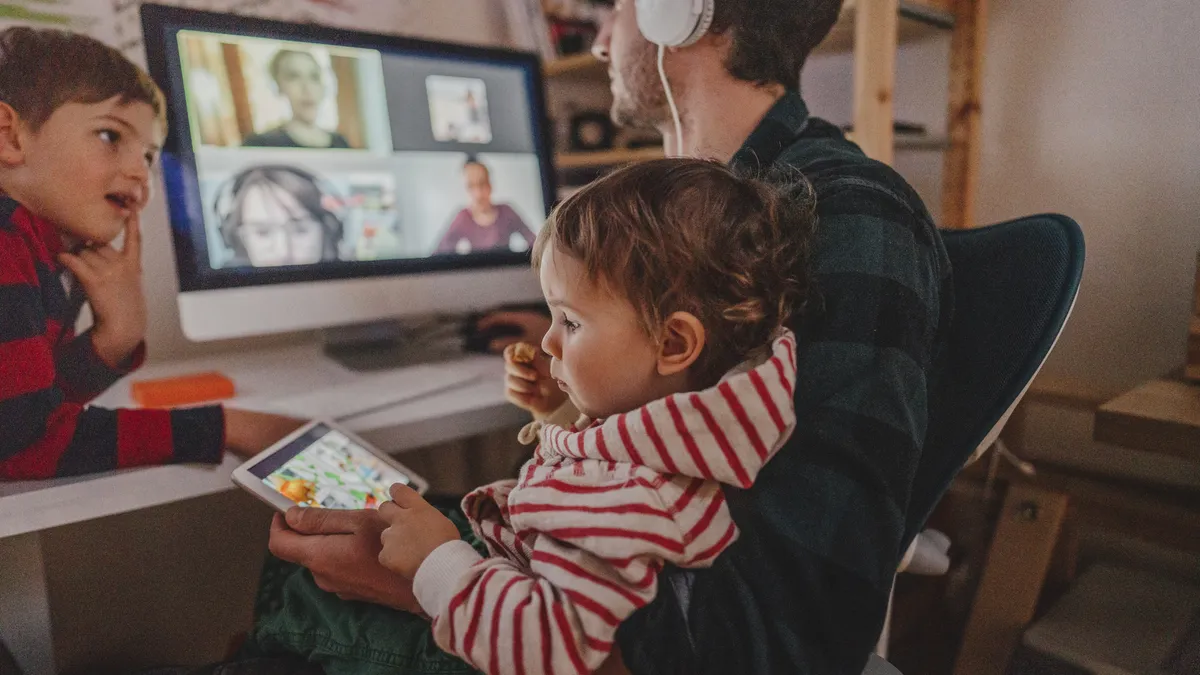We’ve entered a new era: slow living—and companies keen on retaining talent are tuning into this trend.
Following the death of the Girlboss in 2021, we saw numerous social trends, like the corporate villain, rebel against hustle culture. The latest, slow living, is about embracing a more meaningful and conscious lifestyle while spending less time on what doesn’t make you happy (like one’s job). Gen Z and Millennials are here for it, so companies must be too.
While some are up and moving to France...
…Others are saying no to overcrowded calendars and toxic cultures.
While HR leaders can’t be expected to follow every TikTok trend, this one invites you to slow down to get your company ahead. (Because there’s a lot to see when you pay attention.)
How are you?
Before going further, take a second. Ask yourself: how do I feel? And how did I show up at work today? Yesterday?
When you take it slow, look around and take it in, you may see that…
You’re probably doing too much.
You spend loads of time pouring yourself into the welfare of others without having time to notice the toll it takes on you.
As Dr. Matt Poepsel, the VP of Professional Services at The Predictive Index and Author of Expand the Circle, points out, we live in a world that asks HR leaders, “Hey, where are those answers to the problems the world has never seen before?” From the pandemic to quiet quitting, you name it and HR has been tasked with solving it.
But what if you could solve more workplace problems by doing less? And what if Gen Z and Millennials are, you know, onto something?
Because doing too much leads to not enough results.
Most of us agree that too many meetings are stressful and take time away from getting work done.
Too many responsibilities outside a job title can make us feel undervalued. Too many benefits (but none you actually want) make us feel misunderstood. Meanwhile, fewer barriers and less confusion often equal more satisfaction.
To put this idea into perspective (inspired by this TikToker), think of the workplace as where you go to get bread. (It is, isn’t it?) Would you prefer to go to the bread aisle of your local grocery store at 6pm during the evening rush or stroll into your neighborhood bakery at noon for a flaky croissant and fresh baguette?
The answer is clear and when you embrace slow living in HR, many other things become clear too.
The solution to your pain point(s) is obvious.
Slow living invites you to look for simple answers. For example, if specific teams aren’t thriving, the solution could be adding a missing skill set.
If everyone works after hours, the solution could be cutting unnecessary daily meetings. If some employees are overwhelmed, the answer could be teaching them how to delegate.
If people are disengaged, the solution could be matching them with roles they’re naturally good at. And if not all leaders know how to motivate their teams, the answer could be offering emotional intelligence training.
What slow living is showing us is that solutions to challenging problems don't have to be complicated.
And when you do come up with a solution, take it slow—and don’t act before you ask. (Aka, ensure your employees want your proposed solutions.)
The values on your website aren’t practiced onsite.
Name your company values—go!
Struggling? You’re not alone. Values are a big part of company branding and while 85% of organizations have brand guidelines, only 30% enforce them.
Today’s workforce wants to work for a company that matches their values. However, it can’t only be the values on the website that match; the experience must match, too. And so, Gen Z and Millennials do things differently to get the truth.
“When they [Gen Z and Millennials] see on the website that a company is all about flexibility, they question if that’s true,” says Dr. Poepsel. “They ask different questions in interviews and do back-channel interviews of anybody they know who works there to ask, ‘Is that true?’”
What slow living can teach here is to pause your employer branding pitch and ask yourself, “Is that true?” (If you're unsure, it’s time to reconnect yourself and everyone else, to your company’s purpose.)
The unforeseen can often be prevented by, well, looking.
Remember when we asked you to check in with yourself? Now, check in on your workplace. How did your colleagues show up today? Are they showing up at all?
Avoid future workplace complications by slowing down to assess how your business functions.
Consider how you build your teams. How do you inspire your leaders? How do you ensure the people at the heart of your business feel heard? And how often are you looking? With greater awareness, you can fill in gaps faster and with ease.
Fun fact: Most people think they’re self-aware (95%), but only 10-15% actually are.
And when you instill this same awareness in fellow people leaders, you can collectively spot problem areas—before they become problems. In truth, many of today’s workplace challenges are preventable by “developing awareness of your current priorities, your current workload and the reality of what you’re asking of your team members,” says Dr. Poepsel.
“But without awareness, there can't be change.”
…And when you want effortless help, there’s PI for that.
Slow living may be just another social media trend…or the antidote to your challenges.
If, once you pause, you realize you want to design great teams and culture, foster more engagement and inspire greatness in your people anywhere in the world, then The Predictive Index, an award-winning talent optimization platform, is there to make it happen for you. How? Book a demo with PI to find out.










